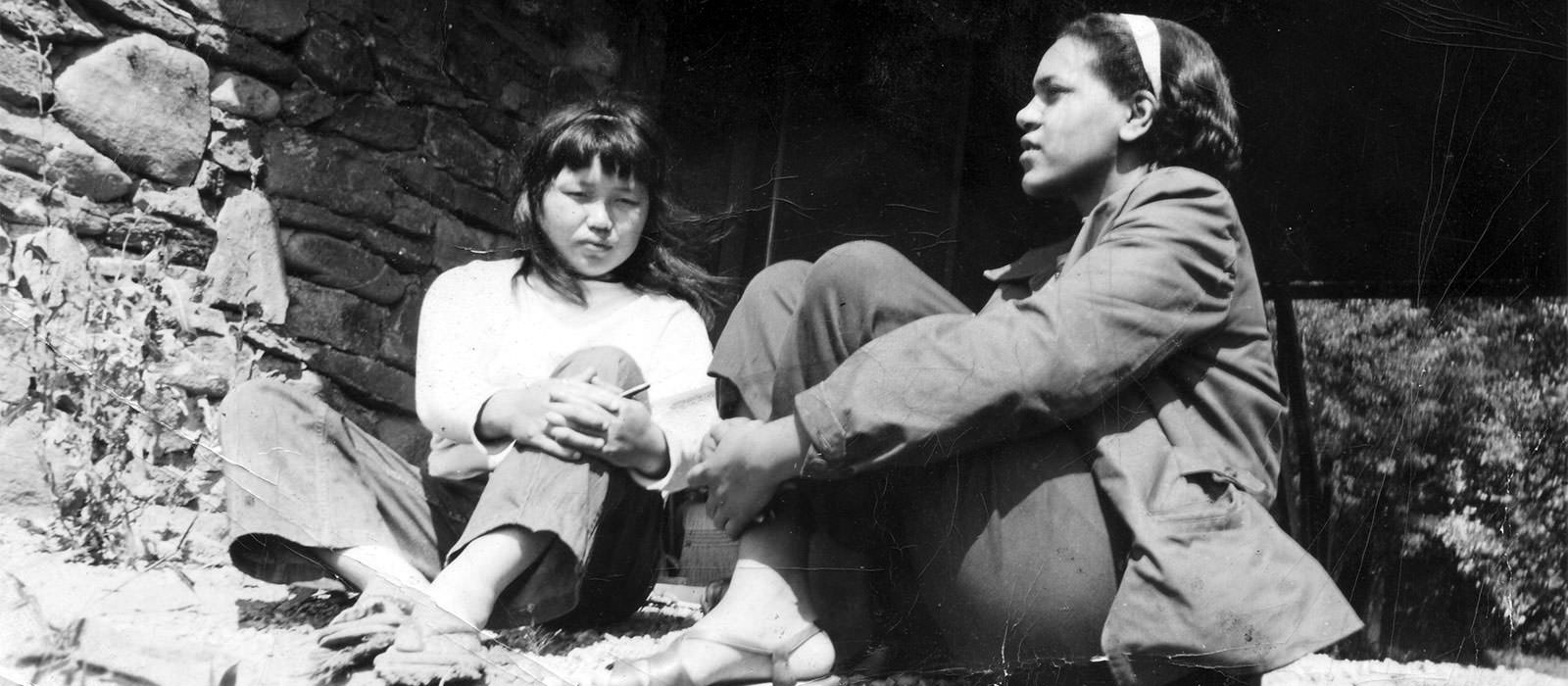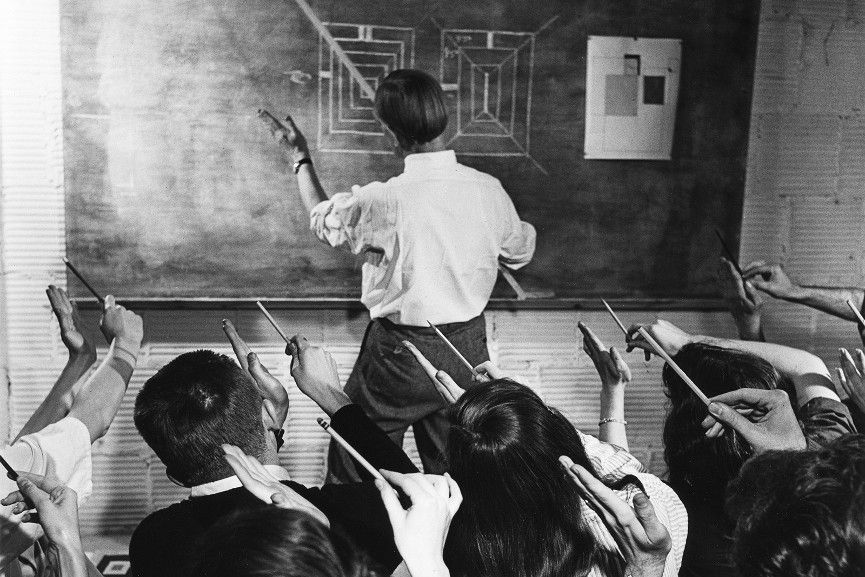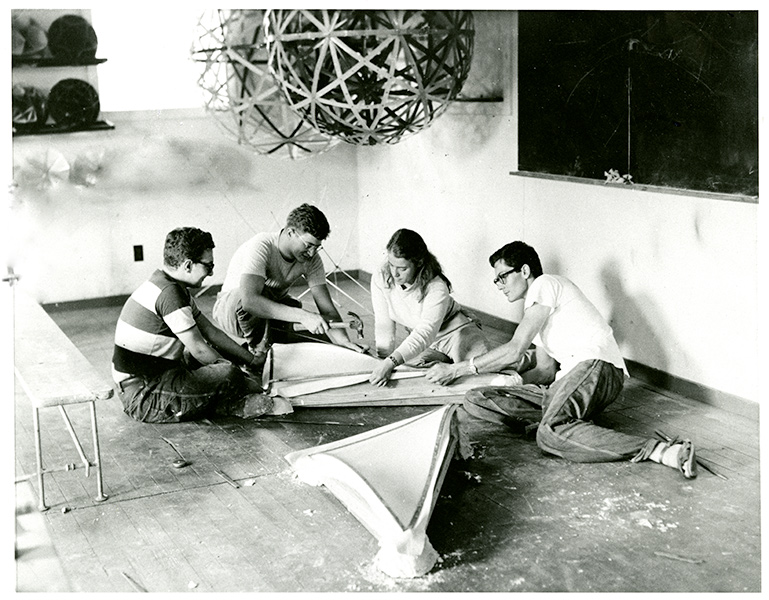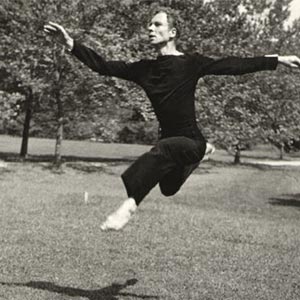December 1
Founded in 1933 by some frustrated Florida academics, Black Mountain College was not intended to be an Arts school. The goal was a democratic and communal academic environment which balanced studies in arts with the humanities and manual labor, all with an ultimate goal of creating “complete” people. With such an exciting experiment, it’s no wonder the artists came – both because of the creative environment fostered and because of historical events underway: the closing of the Bauhaus under Nazi Germany, creative refugees fleeing the Nazis, and the Great Depression.
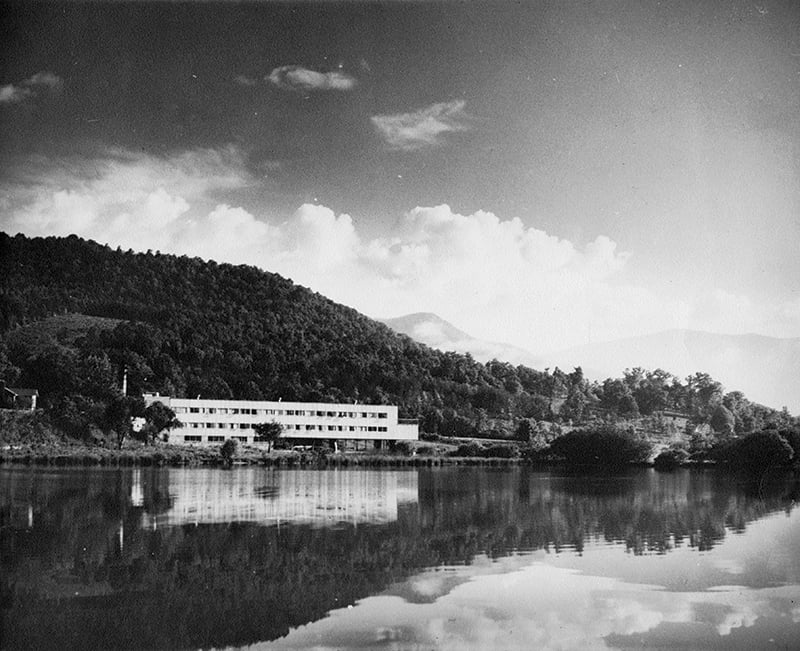
“We do not always create ‘works of art,’
but rather experiments;
it is not our ambition to fill museums:
we are gathering EXPERIENCE.”
― Josef Albers, BMC teacher
BMC founders did not set out to break societal conventions, but when democracy, collaboration, & creativity are centered, it’s inevitable that some boundaries that needed crossing get crossed. Women were welcomed as students, of course many encouraged by so many men being drafted for World War II. Many creative spouses ended up leading workshops and teaching (though most were of course never paid). Though Jim Crow was in full swing in the South where BMC was located, students and artists-in-residence of color were also welcomed.
So you had creative people who might not otherwise ever come into contact with one another, not only living and working alongside each other, but collaborating together.
Musicians, dancers, actors, and painters came to BMC sensing the creative crucible manifesting. People like Willem and Elaine de Kooning, Robert Rauschenberg, Josef and Anni Albers, Jacob Lawrence, John Cage, Merce Cunningham, Kenneth Noland, Franz Kline, Ruth Asawa, Buckminster Fuller, Dorothea Rockburne, and more flocked to Black Mountain to create together with philsophers, mathematicians, poets, potters, and weavers. Each not only learned from the craft of the other, but often experimented with or even changed their craft or medium because of their encounters.
Though BMC closed in 1957, its impact on both the art and education worlds can still be felt today: the rise of multi-media arts, interest in work-study, materials experimentation, dropping of focus on grades, the graying of the line between craft and fine art, more voices beyond white-european men bringing their stories and experiences to the creative table…. Many of these can be traced back to the 24 year experiment in the mountains of western North Carolina.
Many BMC artists not only continued to pursue their craft, they also became life-long activists/advocates for access and importance of the arts: in schools, public spaces, and beyond.
And they influenced artists and thinkers they encountered. The artists we will explore over the next 24 days include artists that spent time at Black Mountain College as students, teachers, or both. There will also be artists and collaborative projects of the past and present who were influenced directly by them – or indirectly – as their arts and ideas transformed the creative world of making.
Links & Opportunities for Further Exploration
- If you live in or near Asheville (or are able to visit) you might consider visiting the Black Mountain College Art museum in downtown Asheville which presently has an exhibit focused on the weaving program.
- You can also tour the BMC Lake Eden Campus. See upcoming dates and details here.
- Black Mountain College: Idea & Place (great overview)
- Black Mountain College Museum website
- BMC: Innovation in Art, Education & Lifestyle (Exhibit at APP State)
- VIDEO: Black Mountain College Thumbnail Sketch (old but comprehensive short video)
- VIDEO: BMC: The Most Influential School
- VIDEO: Leap Before You Look: Black Mountain College 1933–1957 | ICA/Boston
- VIDEO: Black Mountain College: The Most Influential School That Vanished
- Exhibit: Women of BMC: Question Everything!
- Exhibit at BMC Museum 2023-24: Weaving at Black Mountain College:Anni Albers, Trude Guermonprez, and Their Students
- BMC Museum Past Exhibit: Modernism & Black Liberation at BMC
- Article: Black Mountain College – A Fascinating Chapter in the History of Education and the Arts
Invitation to Creativity
Reflect (and/or journal) about a time/place where you felt free to be yourself and therefore more free to create or do. Maybe it was a traveling experience or an educational setting, a camp, or a faith community. Maybe it was a virtual space.
What traditional rules or ways of doing things were lifted that gave an opportunity for new connections and/or expressions?
If you’ve never had this experience why do you think that is?
Were there opportunities that ended up not being available to you that might have offered that kind of space
Are there any spaces or groups you are part of now that embody this spirit? Or have the potential to?
Please also introduce yourself on our shared blog!

